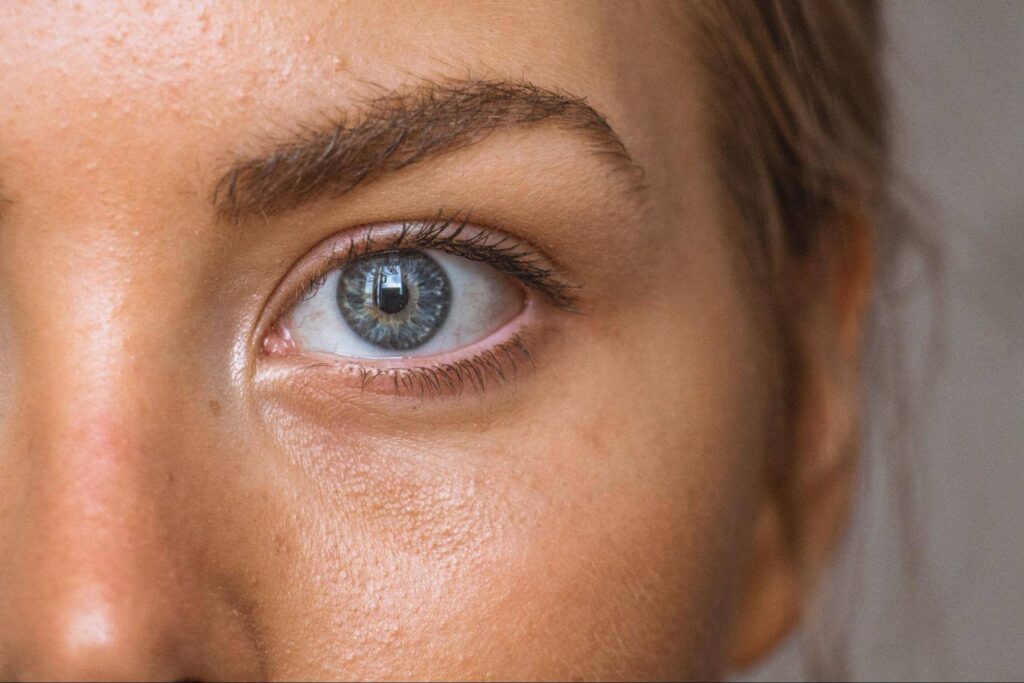Smoking is a dangerous habit that harms many aspects of our health. The dangers of smoking are well documented, ranging from lung cancer to heart disease.
However, the effect of smoking on our vision is frequently neglected. In this detailed post, we will look at the link between smoking and vision, and answer the question does eyesight improve after quitting smoking?
Smoking and Vision Problems
To understand how smoking impacts eyesight, we must first understand the complexities of our visual system. The retina, positioned in the rear of the eye, is critical to our ability to see. The macula is responsible for central vision within the retina, which allows humans to read, drive, and conduct other critical jobs. Vision issues occur when the macula is injured.
Tobacco use accelerates the natural aging of the macula increase your chances of developing vision-threatening diseases. Cigarette smoke contains toxic compounds that hasten the breakdown of macular pigments, which are essential for maintaining healthy photoreceptors. Furthermore, smoking affects the absorption of key nutrients required for macular health, reducing eyesight even further.
Eye Problems Related to Smoking

Macular Degeneration
Age-related macular degeneration (AMD) is a progressive eye disease that affects the macula, leading to loss of vision and blind spots. Numerous studies have indicated a substantial association between smoking and an increased risk of getting AMD.
Smokers are three times more likely to develop this condition compared to non-smokers.
Tobacco use has two negative consequences on the macula. To begin with, smoking hastens the degradation of macular pigments, hastening the decrease in eyesight. Second, smoking reduces the oxygen supply to the macula, resulting in hypoxia, which further damages the delicate retinal structures.
Quitting smoking can reduce the risk of AMD and possibly halt its progression.
Cataracts
Cataracts are a frequent age-related visual impairment that is defined by the clouding of the natural lens of the eye. While cataracts can develop spontaneously, smokers are twice as likely as non-smokers to acquire this ailment. The length and intensity of smoking increases your chances of developing an incidence of cataracts.
Nuclear cataracts are caused by smoking, namely the substances found in cigarette smoke. These cataracts damage the middle section of the lens, reducing focus and resulting in blurred vision. Given that over half of all Americans have cataracts by the age of 80, the increased risk connected with smoking is a major issue.
Diabetic Retinopathy
Diabetic retinopathy is a significant diabetic complication that damages the blood vessels in the retina. Not only does smoking raise the likelihood of acquiring type 2 diabetes, but it also hastens the onset of diabetic retinopathy.
Smokers with diabetes are more likely to acquire this disease than nonsmokers with diabetes.
The combination of smoking and diabetes puts the eyes in peril. Smoking causes the blood vessels in the retina to leak or break down.
Diabetes simultaneously destroys blood vessels, leading to further difficulties. The combination of these two variables hastens the development and progression of diabetic retinopathy, threatening eyesight.
Other Eye Problems
While macular degeneration, cataracts, and diabetic retinopathy are the most common eye disorders related to smoking, this hazardous habit can also worsen other visual problems.
Dry Eyes: Smoking can aggravate dry eye symptoms such as irritation, redness, and a gritty feeling. Tobacco smoke irritates the eyes and destroys the tear layer, resulting in insufficient lubrication and discomfort.
Uveitis: It is an inflammation of the uvea, which is the central layer of the eye. While smoking does not cause uveitis, it does raise the chance of acquiring it. Uveitis can result in significant problems such as cataracts and glaucoma.
Conjunctivitis (Pink Eye): Smoke is a frequent allergen that can induce allergic conjunctivitis. Smoking, whether actively or passively, can cause redness, itching, and irritation of the eyes. Conjunctivitis, while not as serious as other disorders, can nevertheless cause discomfort and inconvenience if left untreated.
Increased Intraocular Pressure: Smoking has been linked to higher intraocular pressure, which is a risk factor for glaucoma. Glaucoma is a set of eye illnesses defined by optic nerve injury, which is frequently caused by high intraocular pressure. Smoking cessation can help minimize this risk.
Does Eyesight Improve After Quitting Smoking?
Quitting smoking will not repair any optic nerve or macula damage caused by the habit, but it will put you in a better position to slow the progression and limit additional damage to your vision.
It may take some time to reverse the other effects of years of smoking, but quitting and allowing the eyes to heal at their speed will undoubtedly enhance your eye health in the long term.
Benefits of Quitting Smoking

Now that we’ve discussed the negative consequences of smoking on vision, let’s look at the possible advantages of stopping smoking for visual health.
Halting Macular Degeneration Progression
Quitting smoking has been demonstrated in studies to reduce the course of macular degeneration. A study of elderly ex-smokers who had not smoked in over 20 years discovered that their risk of getting age-related macular degeneration was equivalent to that of never-smokers.
This suggests that quitting smoking can have a long-term beneficial effect on macular health.
Reducing the Risk of Vision Problems
Quitting smoking lowers the chance of having a variety of eye diseases dramatically. Individuals can reduce their risks of developing macular degeneration, cataracts, diabetic retinopathy, and other smoking-related vision disorders by avoiding smoking-induced damage to the macula and blood vessels in the eyes.
Enhancing Oxygen Supply to the Retina
Smoking lowers the oxygen flow to the retina, perhaps resulting in visual impairment. Individuals who stop smoking allow their lungs to heal and operate more effectively, resulting in enhanced
blood oxygenation.
This improved oxygen flow aids the retina, resulting in clearer eyesight
Protecting the Eye’s Blood Vessels
Tobacco use harms blood vessels throughout the body, including those in the eyes. Individuals can prevent their eye’s blood vessels from future damage by stopping smoking.
This is especially significant for diabetics since smoking exacerbates the difficulties associated with diabetic retinopathy
.
Improving Overall Eye Health
They are quitting smoking benefits not only particular eye diseases but also general eye health. Individuals lower their risk of eye irritation, dry eyes, and other smoking-related discomforts by avoiding exposure to cigarette smoke. Improved eye health leads to improved visual acuity and general well-being.
How to Quit Smoking

Quitting smoking is a difficult task, but it is critical for improving both general health and vision. Here are some methods to aid you on your way to quitting smoking:
1. Seek Support
Reach out to friends, family, and support groups to build a network of people who can offer encouragement and support during the quitting process. Support may make a huge difference in the success of quitting smoking.
2. Consider Nicotine Replacement Therapy
Nicotine replacement therapy (NRT) treatments, such as patches, gums, or inhalers, can assist in the management of nicotine cravings and withdrawal symptoms. Consult with a healthcare provider to discover which NRT option is best for you.
3. Explore Medications
Certain drugs, such as bupropion or varenicline, can help people quit smoking by decreasing cravings and withdrawal symptoms. Discuss the possible advantages and hazards of drug choices with a healthcare practitioner.
4. Set Clear Goals and Rewards
Set precise goals for quitting smoking and praise yourself when you reach each milestone. This can give inspiration and a sense of accomplishment, supporting your determination to live a smoke-free lifestyle.
5. Identify Triggers and Develop Coping Strategies
Identify events or behaviors that stimulate the desire to smoke and devise coping methods to control these triggers effectively. Diverting your attention away from the temptation to smoke can be accomplished by engaging in alternate activities or seeking diversions.
6. Practice Stress Management Techniques
Smoking is frequently related to stress reduction. To substitute smoking as a coping method, consider using alternate stress management techniques such as exercise, meditation, deep breathing, or indulging in hobbies.
7. Create a Supportive Environment
Remove any smoking accessories from your surroundings, such as ashtrays or lighters. To limit temptation and provide a supportive environment for quitting, make your home and office smoke-free zones.
8. Stay Positive and Persistent
It may be difficult to quit smoking, and setbacks may occur. Stay optimistic, persevere, and remember that each day you go without smoking brings you closer to better health and eyesight.
Conclusion
The negative consequences of smoking on vision are apparent. Smoking increases the risk of eye disorders, including macular degeneration, cataracts, and diabetic retinopathy, and can result in irreversible vision loss.
There is, nevertheless, hope.
Quitting smoking can enhance eyesight greatly by slowing disease progression, lowering the risk of visual impairments, increasing oxygen delivery to the retina, and preserving the eye’s blood vessels.



